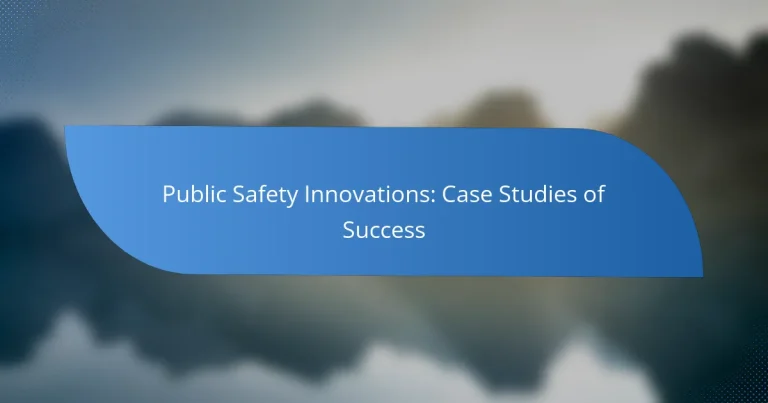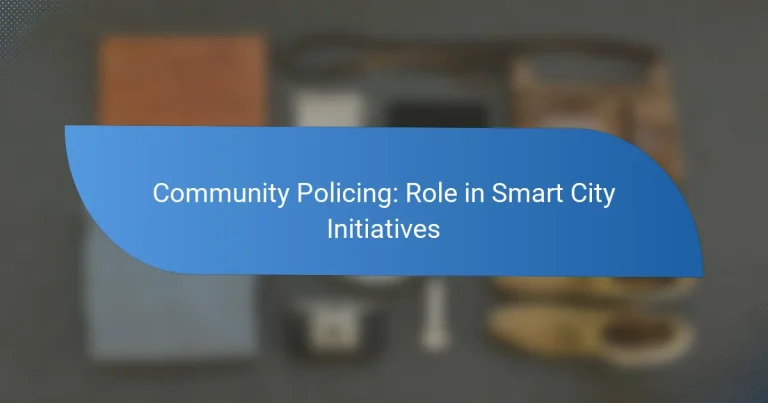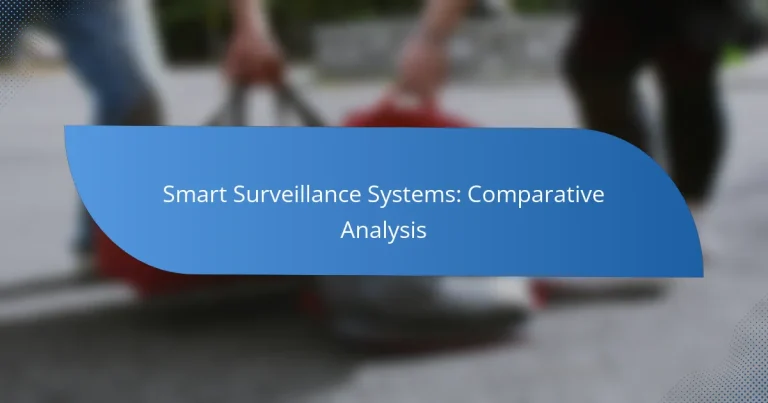Emergency Response: Best Practices in Smart Urban Areas
In smart urban areas, best practices for emergency response emphasize the integration of advanced technologies to improve efficiency and communication. By utilizing Internet of Things (IoT) devices and artificial intelligence (AI), cities can enhance their preparedness and response capabilities, ensuring quicker detection and optimized resource management during crises.

What Are the Best Practices for Emergency Response in Smart Urban Areas?
Best practices for emergency response in smart urban areas focus on leveraging technology to enhance efficiency, communication, and preparedness. By integrating Internet of Things (IoT) devices, artificial intelligence (AI), and robust communication systems, cities can significantly improve their response to emergencies.
Utilizing IoT for Real-Time Data
IoT devices play a crucial role in gathering real-time data during emergencies. Sensors can monitor environmental conditions, traffic patterns, and even crowd movements, providing first responders with vital information. For instance, smart traffic lights can adjust to clear paths for emergency vehicles, reducing response times.
Implementing IoT requires careful planning, including selecting appropriate sensors and ensuring data security. Cities should prioritize interoperability among devices to create a cohesive network that enhances situational awareness.
Implementing AI for Predictive Analysis
Artificial intelligence can analyze vast amounts of data to predict potential emergencies, allowing cities to take proactive measures. For example, AI algorithms can assess weather patterns and historical data to forecast flooding or other natural disasters. This predictive capability enables better resource allocation and preparedness.
To effectively implement AI, urban areas should invest in training personnel and ensuring access to quality data. Collaboration with tech companies can also enhance the development of tailored AI solutions for specific urban challenges.
Enhancing Communication Systems
Robust communication systems are essential for effective emergency response. These systems should facilitate clear and timely communication among first responders, city officials, and the public. Utilizing platforms that integrate multiple channels, such as mobile apps and social media, can keep citizens informed during crises.
Regular testing and updating of communication protocols are necessary to ensure reliability. Cities should also consider multilingual options to cater to diverse populations, enhancing inclusivity during emergencies.
Training First Responders with Technology
Training first responders with the latest technology is vital for effective emergency management. Virtual reality (VR) and simulation tools can provide realistic training scenarios, helping responders practice their skills in a controlled environment. This approach enhances preparedness and confidence in real-life situations.
Continuous education and hands-on training with new technologies should be prioritized. Collaborating with tech firms can provide access to the latest tools and training methodologies, ensuring responders are well-equipped to handle emergencies.
Community Engagement and Awareness
Engaging the community in emergency preparedness is critical for effective response. Public awareness campaigns can educate citizens about emergency protocols, available resources, and how to utilize technology during crises. For example, workshops can demonstrate how to use emergency apps or report incidents through smart devices.
Building strong community networks can enhance resilience. Encouraging local organizations to participate in emergency planning ensures that diverse perspectives are considered, fostering a collaborative approach to safety and preparedness.
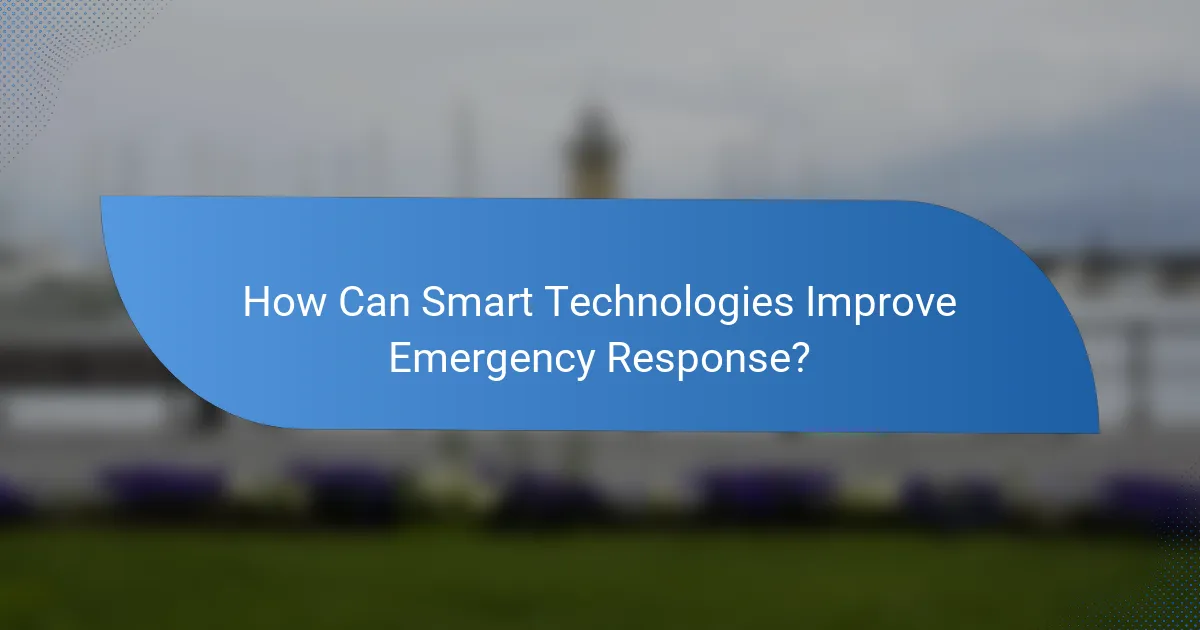
How Can Smart Technologies Improve Emergency Response?
Smart technologies enhance emergency response by enabling faster detection, efficient communication, and optimized resource management. These innovations leverage real-time data to improve situational awareness and decision-making during crises.
Smart Sensors for Early Detection
Smart sensors play a crucial role in early detection of emergencies, such as fires, floods, or hazardous material spills. These devices can monitor environmental conditions and alert authorities within seconds, significantly reducing response times.
For example, smoke detectors equipped with IoT capabilities can send alerts directly to emergency services, allowing for immediate action. In urban areas, integrating these sensors with existing infrastructure can create a comprehensive monitoring network.
Mobile Apps for Citizen Reporting
Mobile applications empower citizens to report emergencies quickly and efficiently. These apps can facilitate real-time communication between the public and emergency responders, ensuring that critical information is shared without delay.
Features such as GPS location tagging and multimedia uploads allow users to provide precise details about incidents. Cities can encourage app usage by promoting awareness campaigns and ensuring user-friendly interfaces.
Data Analytics for Resource Allocation
Data analytics helps emergency services allocate resources more effectively during crises. By analyzing historical data and real-time inputs, agencies can identify patterns and predict where resources will be needed most.
For instance, predictive analytics can forecast high-risk areas based on past incidents, allowing for proactive deployment of personnel and equipment. Implementing these analytics requires collaboration between city planners and emergency management teams to ensure data accuracy and relevance.
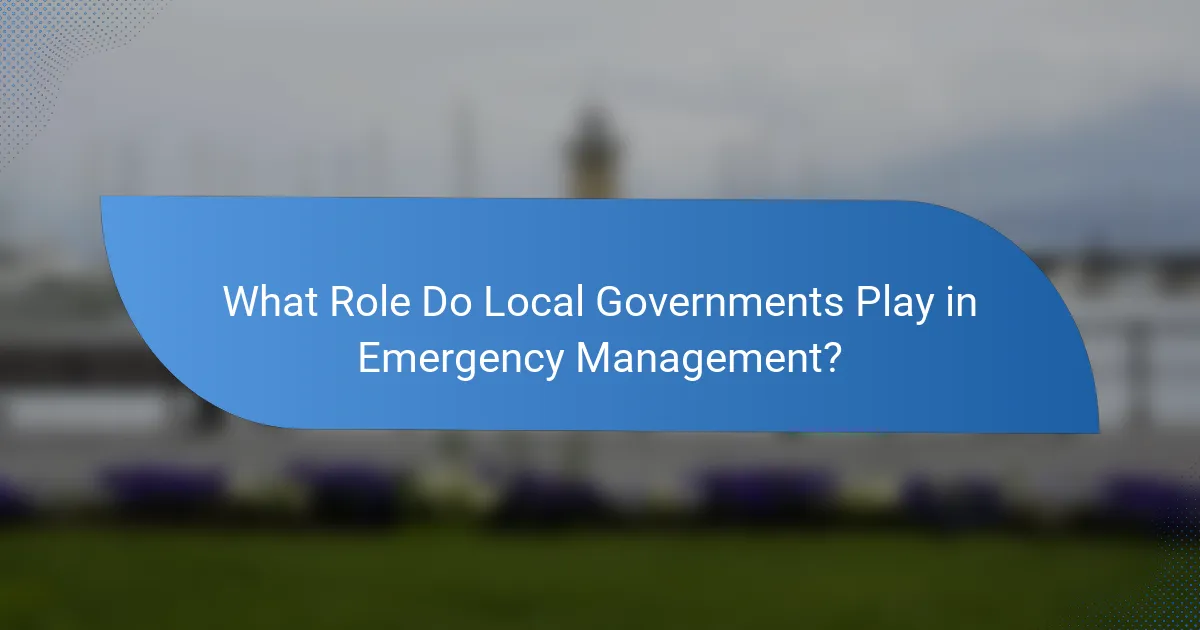
What Role Do Local Governments Play in Emergency Management?
Local governments are crucial in emergency management, as they develop policies, allocate resources, and collaborate with various stakeholders to ensure community safety. Their actions directly influence how effectively urban areas respond to emergencies, especially in smart cities where technology plays a significant role.
Policy Development for Smart Cities
Local governments must create policies that integrate technology into emergency response strategies. These policies should address data sharing, communication protocols, and the use of smart infrastructure to enhance situational awareness during crises.
For instance, a city might implement regulations that require real-time data reporting from sensors and IoT devices. This can help emergency services respond more quickly and efficiently to incidents.
Funding and Resource Allocation
Effective emergency management requires adequate funding and resource allocation from local governments. This includes budgeting for technology investments, training personnel, and maintaining emergency response equipment.
Local governments should prioritize funding for initiatives that enhance resilience, such as upgrading communication systems or investing in predictive analytics tools. Allocating resources wisely can significantly improve response times and overall effectiveness during emergencies.
Collaboration with Tech Companies
Collaboration with technology companies is essential for local governments to leverage innovative solutions in emergency management. Partnerships can lead to the development of advanced systems that enhance response capabilities.
For example, a city might work with a tech firm to implement a smart alert system that notifies residents of emergencies via mobile apps. Such collaborations can also facilitate training programs that ensure emergency responders are well-versed in using new technologies.
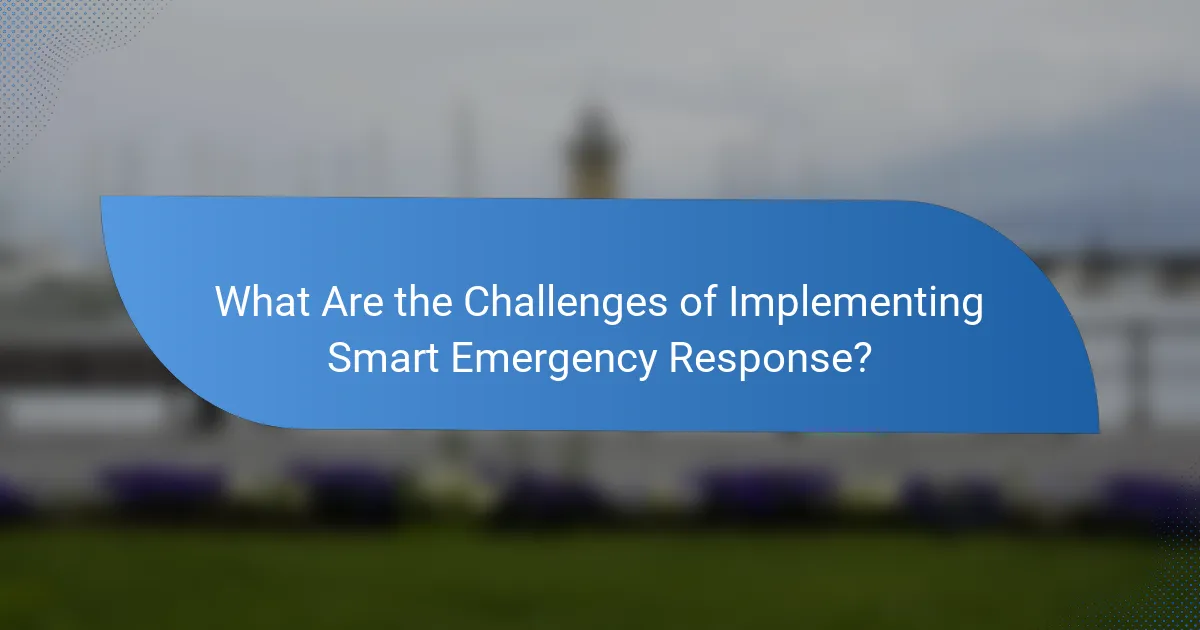
What Are the Challenges of Implementing Smart Emergency Response?
Implementing smart emergency response systems faces several challenges, including data privacy concerns, integration with existing infrastructure, and the costs associated with adopting new technologies. Addressing these issues is crucial for effective and efficient emergency management in urban areas.
Data Privacy and Security Concerns
Data privacy and security are paramount when implementing smart emergency response systems. These systems often rely on sensitive personal information, which raises concerns about unauthorized access and misuse. Ensuring compliance with regulations such as GDPR in Europe or CCPA in California is essential to protect citizens’ data.
To mitigate risks, organizations should adopt robust encryption methods and implement strict access controls. Regular audits and assessments can help identify vulnerabilities and ensure that data handling practices remain secure.
Integration with Existing Systems
Integrating smart emergency response technologies with existing systems can be complex and challenging. Many urban areas already have legacy systems in place, which may not be compatible with new technologies. A thorough assessment of current infrastructure is necessary to identify integration points and potential barriers.
Collaboration among various stakeholders, including emergency services, local governments, and technology providers, is crucial for successful integration. Establishing open standards can facilitate smoother communication between different systems and enhance overall operational efficiency.
Cost of Technology Adoption
The cost of adopting smart emergency response technologies can be a significant barrier for many urban areas. Initial investments in hardware, software, and training can be substantial, often requiring budget reallocations or additional funding sources. Cities should consider long-term benefits and potential cost savings when evaluating these investments.
To manage costs effectively, municipalities can explore public-private partnerships, grants, or federal funding opportunities. Prioritizing scalable solutions that allow for gradual implementation can also help spread out expenses over time while still improving emergency response capabilities.
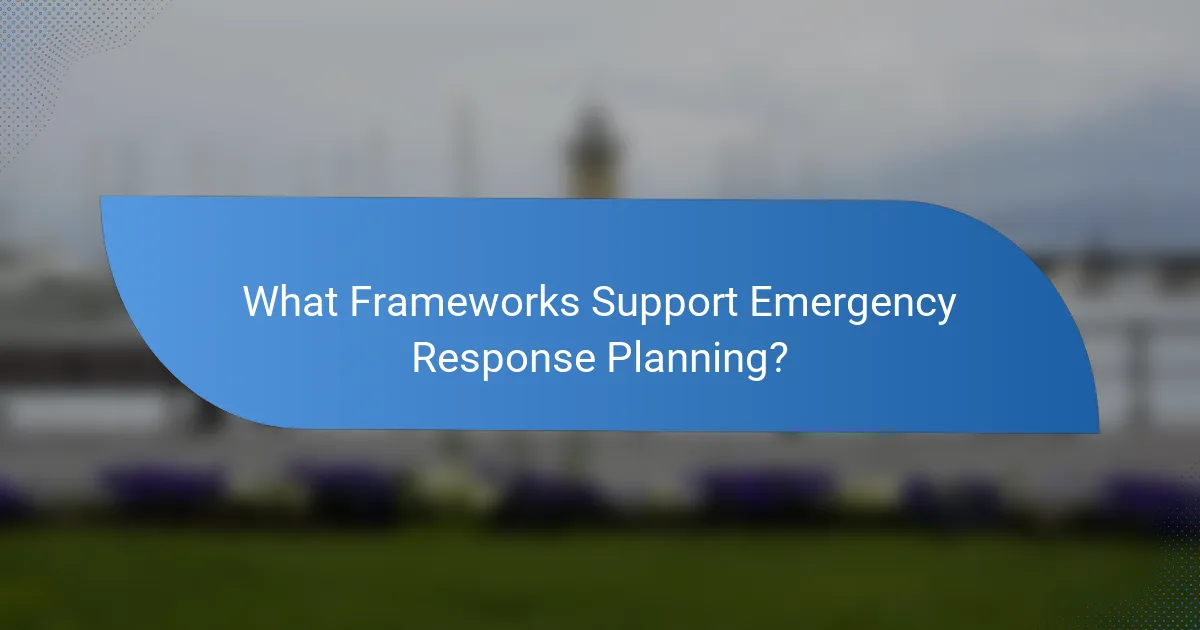
What Frameworks Support Emergency Response Planning?
Emergency response planning in smart urban areas is supported by structured frameworks that enhance coordination and efficiency. Key frameworks include the National Incident Management System (NIMS) and various smart city frameworks that integrate technology and data for effective crisis management.
National Incident Management System (NIMS)
NIMS provides a standardized approach to incident management across various sectors and levels of government. It emphasizes a unified command structure, allowing for seamless collaboration among agencies during emergencies.
Implementing NIMS involves training personnel, establishing clear communication channels, and conducting regular drills. Municipalities should ensure that all stakeholders are familiar with NIMS protocols to facilitate rapid response during incidents.
Smart City Frameworks
Smart city frameworks leverage technology and data analytics to improve emergency response capabilities. These frameworks often include real-time monitoring systems, predictive analytics, and integrated communication platforms that enhance situational awareness.
For effective implementation, cities should invest in IoT devices, data-sharing agreements, and public engagement initiatives. By fostering collaboration between technology providers and emergency services, urban areas can significantly reduce response times and improve overall safety.
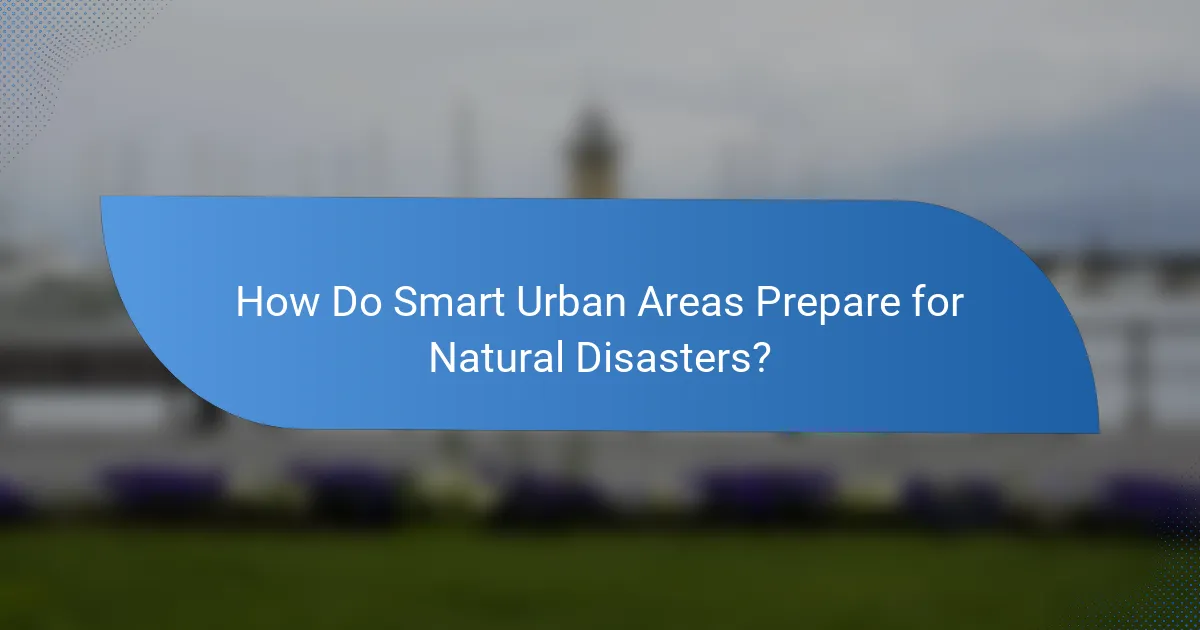
How Do Smart Urban Areas Prepare for Natural Disasters?
Smart urban areas prepare for natural disasters by leveraging technology and data analytics to enhance resilience and response capabilities. This involves integrating real-time information systems, predictive modeling, and community engagement to mitigate risks and improve emergency preparedness.
Risk Assessment and Mapping
Risk assessment and mapping are crucial for identifying vulnerable areas within smart urban environments. This process typically involves analyzing historical data, environmental factors, and population density to create detailed risk profiles for various natural disasters.
Urban planners often utilize Geographic Information Systems (GIS) to visualize risks and prioritize resources effectively. For example, flood-prone zones can be mapped to inform infrastructure improvements and emergency response strategies.
Emergency Drills and Simulations
Conducting emergency drills and simulations is essential for ensuring that both responders and the community are prepared for natural disasters. These exercises help identify gaps in response plans and improve coordination among various agencies.
Smart urban areas often incorporate technology, such as virtual reality or mobile applications, to enhance the realism of these drills. Regularly scheduled exercises, ideally at least once a year, can significantly improve response times and community awareness.

